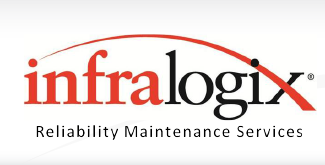Reliability Centered Maintenance (RCM) is a process used to determine that systems are operating at their required levels of effectiveness, and ensure that they continue to do so. RCM is implemented with the aim of increasing cost-effectiveness, generating a greater understanding of organizational risk management, and developing specialized maintenance schedules for each critical asset and system within a given organization.
According to the SAE standard, which outlines the minimum criteria that a process should comply with in order to be called “RCM,” an RCM process will do the following:
- Successfully examine the current functions of an asset, as well as its desired standards of performance. In other words, it takes a snapshot of the current performance levels of a given system or asset.
- Examine the ways in which an asset can fail to fulfill its functions (Functional Failure)
- Determine the causes each failure (Failure Mode)
- Determine the effects of each resulting failure (Failure Effects)
- Determine the consequences which result from each failure (Failure Consequences)
- Determine the proper proactive preventative tasks and steps that should be taken to predict, or avoid each failure
- Determine other necessary measures to be taken in the event that no such preventative task can be found
7 steps for implementing reliability centered maintenance
Step 1 – Select Your Assets for RCM analysis
The first step is to select the asset, or assets, in need of RCM analysis. The asset in question should be one that is critical to your operation in terms of its effects on your overall processes. You should also consider assets with high costs of maintenance and/or ones that require frequent costly repairs.
Step 2 – Define the Systems and Function of Your Targeted Assets
Whether it’s a large or small-scale system, your asset fits into a system in some way. And in order to properly target an asset for RCM, you have to define the overall function of your asset within its system, as well as the inputs and outputs of that system. For example, in a factory or warehouse, a conveyor belt is an asset used to move products or components from one place to another, that is its function. Its inputs would be the products or components entering the conveyor belt, as well as the energy used to power the belt. Its outputs would be the products or components that come out the other end. This can also be broken down into subsystems (e.g. the motor used to power the belt is a separate, but related asset).
Step 3 – Define the Various Functional Failures of Your Asset
Functional Failures are the inability of an asset to provide its intended function. Defining these Functional Failures involves making a list of everything that can go wrong with the function of the asset within its system. With your conveyor belt, this might mean that products are being transported to quickly, too slowly, or not at all.
Step 4 – Identify the Failure Modes that Cause Your Functional Failures
Failure Modes are the physical material conditions that cause Functional Failures. Whether it’s a lack of lubrication, a misfiring roller, a broken bearing, or a loose belt, your conveyor belt comes with a multitude of potential failure modes that should be identified during the RCM process.
Step 5 – Assess the Effects and Consequences of Your Failure Modes
Carefully consider what might happen as a result of each potential failure. Will it affect safety? If so, how critical could this effect be? Will it affect your ability to deliver on schedule? Will it affect your bottom line? Will it affect other systems and assets in your production or supply chain? Is this failure mode a real possibility under normal operating conditions?
Your answers to these questions will help you identify the most important failure modes and prioritize them for further analysis.
Step 6 – Select A Maintenance Approach for Each of Your Failure Modes
The two most common approaches to maintenance are Reactive maintenance, and Preventive maintenance.
- Reactive maintenance is maintenance that occurs when the need arises, in other words, one waits until a failure occurs and then makes the necessary repairs. Typically selected when it is not technically and economically feasible to detect the onset of the failure mode.
- Preventive maintenance is aimed at avoiding functional failure altogether. This is maintenance that is done on a scheduled frequency to identify impending failure, so that scheduled repairs can be effected to eliminate functional failure.
Either of these maintenance approaches might apply to different assets for a number of reasons, but generally—and for obvious reasons—preventive maintenance is preferred when failure might endanger an employee’s health or safety. Reactive maintenance might be preferred if it is more cost-effective, and the failure mode in question poses no major threat to your overall process and/or the wellbeing of your employees.
When no reactive or preventive maintenance options can be found for a particular asset, then a redesign of the system should be considered in order to eliminate or alter the failure mode in question.
Step 7 – Implement and Review
Finally, once you have identified your preferred approach, you are now ready to implement your RCM plan. Just remember, it is important that you monitor it closely and review it at regular intervals in order to properly evaluate its effectiveness, and the overall benefit it is having on your operation.


